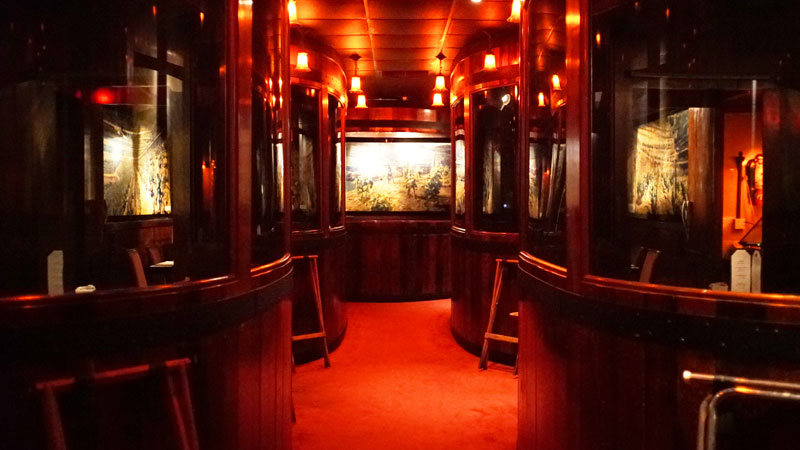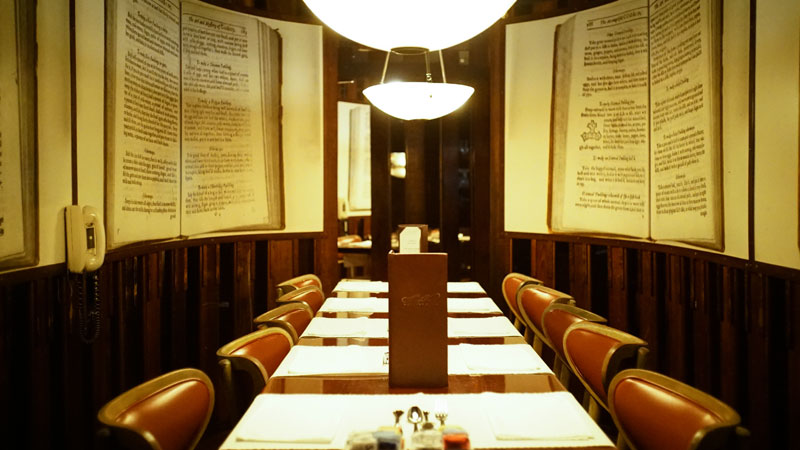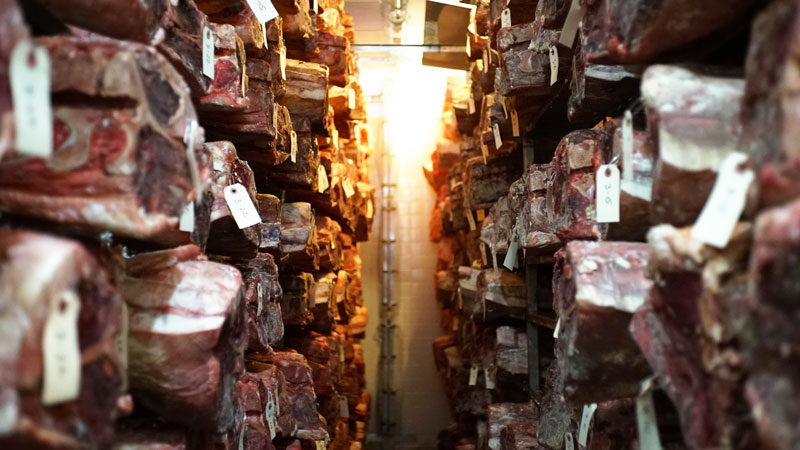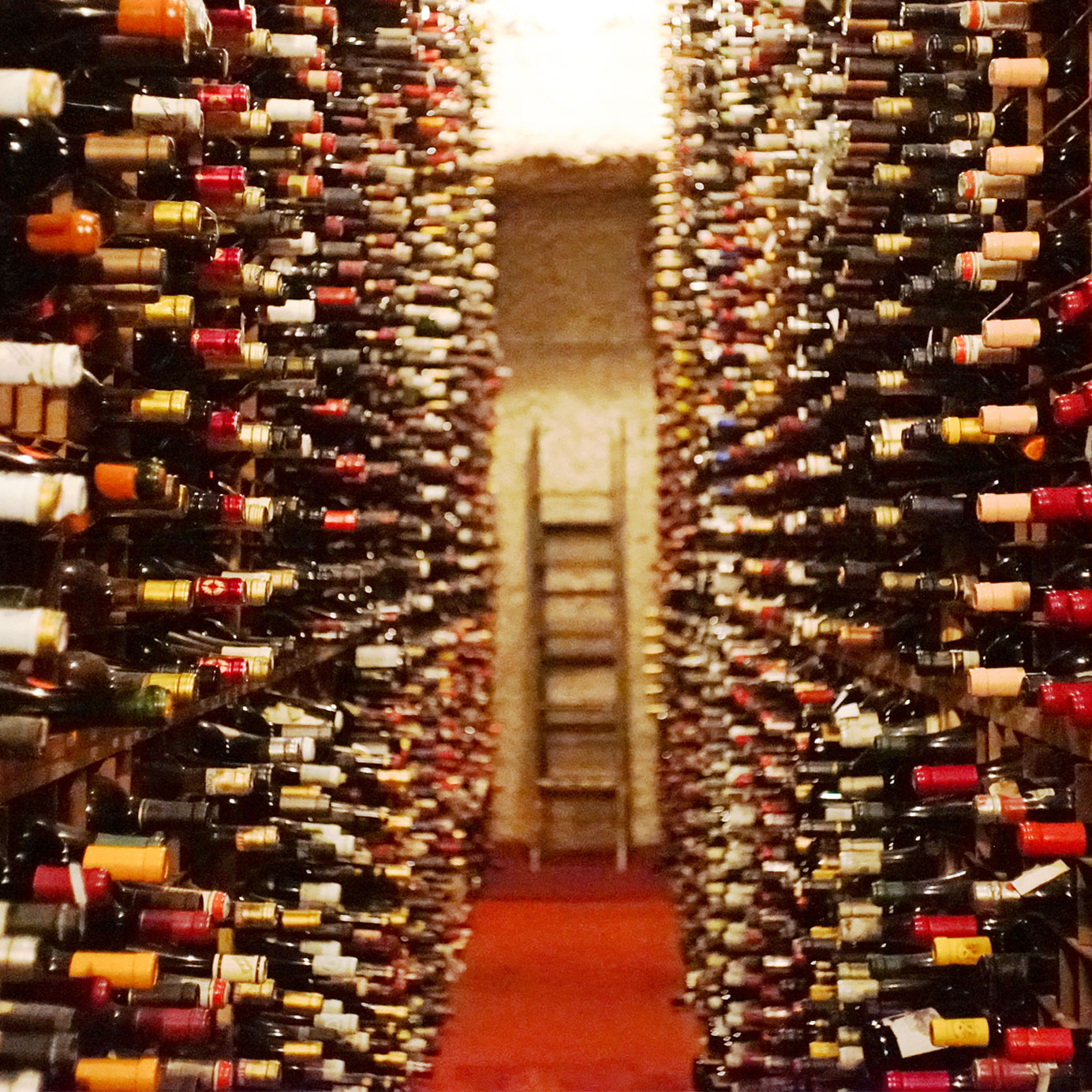There is only one window in Bern’s Steak House, and it’s one customers will never see. Replacing natural light is a red wine-colored aura cloaking the carpet, walls, and staircase, giving rows of antique paintings an alluring, ghostly glow.
The Tampa restaurant opened in 1956 at the hands of Mr. and Mrs. Bernard and Gertrude Laxer, or Bern and Gert, New York natives who had been running a mom-and-pop “luncheonette” and hoped to add a bar to their repertoire. Instead, they created a fine dining institution and pilgrimage point for wine lovers.
The Bern’s of today is helmed by Bert and Gert’s son, David Laxer. Like many American steakhouses, its clubby decor seems preserved in amber, and the menu recalls a time when gluten, dairy, and cardiac health were nary a concern. Yet Bern’s is different. It’s nostalgic for a time that, perhaps, never was.

In Bern’s universe, everyone is welcome. Entrées come with a soup and salad. Meals are best ended with something sweet from your own private booth in a second-story dessert lounge. The piano player takes requests. And anyone can afford to drink their preferred wine, whether it’s a $3.50 supermarket pour or one of the rarest bottles in the world.
“We believe that every guest that comes to Bern’s is a special guest,” Frank Russo, dining room manager, says. “We want everyone to experience the ultimate in fine dining.”
And they will. The wines, steaks, and service at Bern’s have earned the restaurant such accolades as a James Beard Award in 2016, Rachael Ray’s best restaurant in America in 2009, and Wine Spectator’s Grand Award every year since 1981. Along with an ornate lobby and bar, there are eight dining rooms, each named for an aspect of Bern’s travels — Bordeaux, Burgundy, Rhône, Andre Tchelistcheff — with wall-to-wall photographs to prove them. Dinner reservations include an optional tour of the kitchen and wine cellar, as well as a trip upstairs to the Harry Waugh Dessert Room, named for one of Bern’s mentors, where 48 private “rooms” constructed of floor-to-ceiling redwood wine casks await.
Then, of course, there’s the wine cellar containing what is believed to be the largest private wine collection in the world.
To borrow Russo’s word, there is undoubtedly something “special” about this place. Indeed, once inside its ruby-hued walls, it becomes difficult to see where Bern the man ends and Bern’s the steakhouse begins.

Bern was a wealthy eccentric whose lifetime lent him a penchant for collections: of travels, of interests, of friends, and of beautiful things. One of these things was wine. Bern followed his nose around the world, and when he liked something he bought it — sometimes every last drop. “Bern was just way ahead of his time,” Russo says. “Many laughed, but Bern got the last laugh.”
Because of the unusual method, and mass, of his procurements, a trip to Bern’s guarantees access to wines you won’t find anywhere else in the world. Eric Renaud, wine director and sommelier, recalls a recent night when he served a Portuguese white wine from the early 1970s. “I said, ‘Think about it. There’s no one else in the world who is drinking this wine right now,’” Renaud says. “And the bottle cost $75.” (This being inexpensive for such a rare vintage.)
By the numbers, the wine collection at Bern’s is truly massive. In the restaurant’s temperature-controlled wine cellar are 110,000 bottles, organized numerically, including 6,500 table wines and nearly 1,000 dessert wines. Two hundred wines are available by the glass. In a warehouse across the street, half a million more bottles sit waiting for their place in the lottery. “It’s like a Home Depot of wine,” Renaud says.
Their rarity is nearly as shocking as their multitude. Currently, the collection boasts bottles from the early 1900s through the present. (Bottles from the 1800s cleared out in recent years, Renaud says.)
Equally surprising is their affordability. Bern’s prices avoid what Renaud refers to as the corporate markup: If a bottle is $100, a glass is $20, a fair fifth of the total bottle price. “We don’t want to gouge people,” Renaud says.
Adding to the lack of pretension is the fact that wines are treated with equal zeal: As Eater’s Bill Addison pointed out in a 2015 review, a glass of Dom Perignon for $52 and a pour of Sutter Home White Zinfandel for $3.50 are both “offered, if I’m not mistaken, without irony.”
Renaud estimates the rarest bottle to be a 1957 Romanée-Conti, currently priced at $25,000. The most expensive are another Romanée-Conti from 2007, a magnum with a price tag of $35,000, followed by a 1947 Latour for $30,000.
These prices, while steep, are conscientious. Renaud points out that the restaurant strikes a balance between preserving its wines and letting them go. “It’s that damned-if-you-do, damned-if-you-don’t price,” he says. “Plenty of people want the unicorns. If you put them out at a good price, they disappear, then people complain that you don’t have it. If you have it at a high price, then it’s expensive.”

Then, there’s the food: Dry-aged steaks come with a lauded French onion soup and salad. (“If I had to choose one thing to eat for the rest of my life, it would be Bern’s French onion soup,” one Yelp reviewer croons.) A portion of produce is grown on the restaurant’s nearby organic farm, where waiters are required to work as part of their training. Microgreens are grown on-site in the kitchen.
Yet even as Bern’s progresses, its staff concerned with things like microgreens, the essence of Bern’s doesn’t change. “I haven’t been here in almost 20 years … The inside was exactly what I remembered,” another reviewer reminisces.
And it will be the same, seemingly, forever. To its devoted employees who have worked here for decades, to the patrons who’ve returned for just as long, Bern’s is eternal. Vintage by vintage, wines disappear; yet, there will always be 100-year-old bottles; there will always be a waiter from 20 years ago; and there will always be Bern, in spirit and memory.
The restaurant lives and breathes in its own, singular past, present, and future. It’s utterly bucket list-worthy, yet inured to the Instagram age — its magic surpasses filters and humblebrags, and the lack of natural lighting makes Snapchats a challenge. Closed off to the world, Bern’s makes us sentimental for a man we never knew, a life we never had, and wines no one has tasted.
